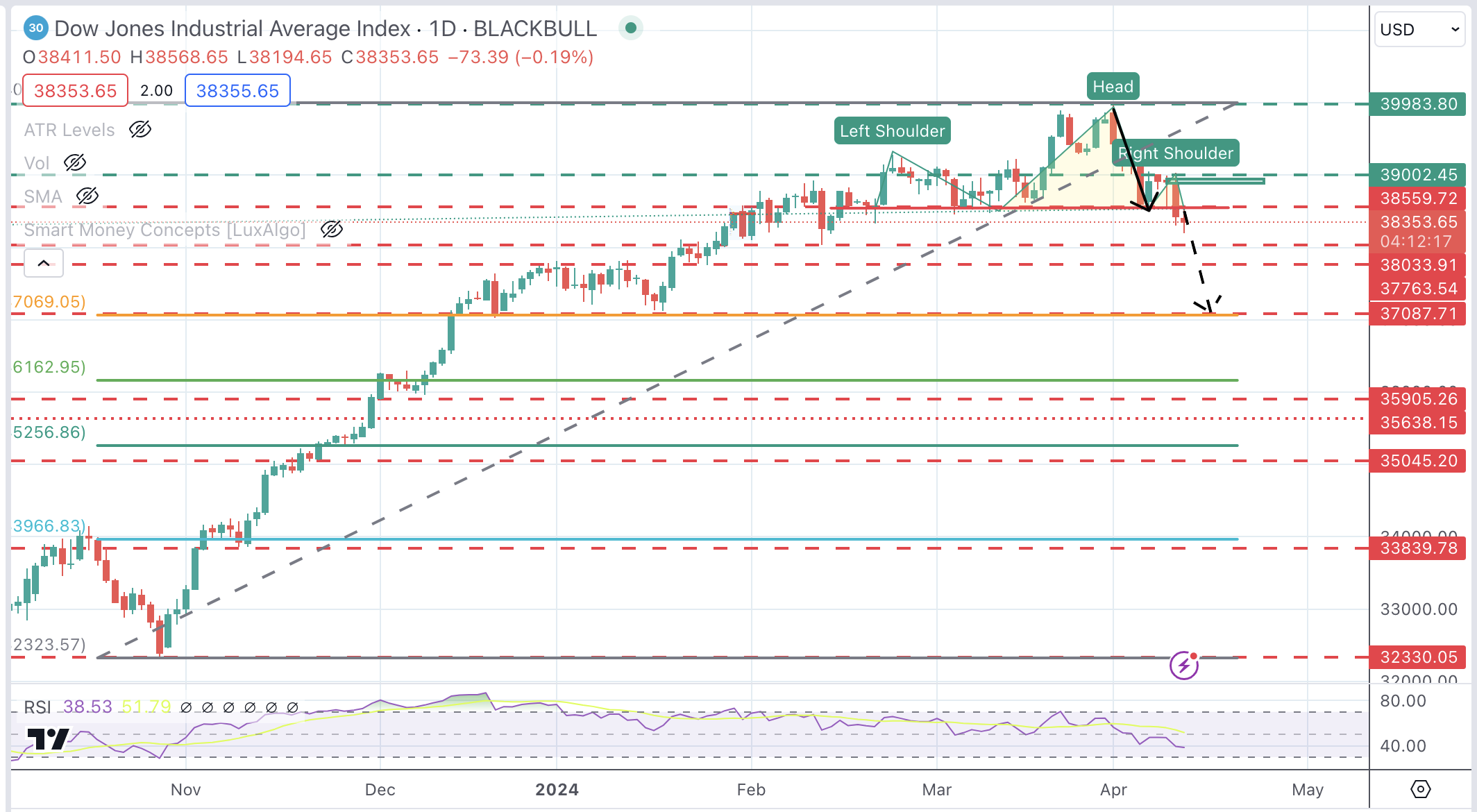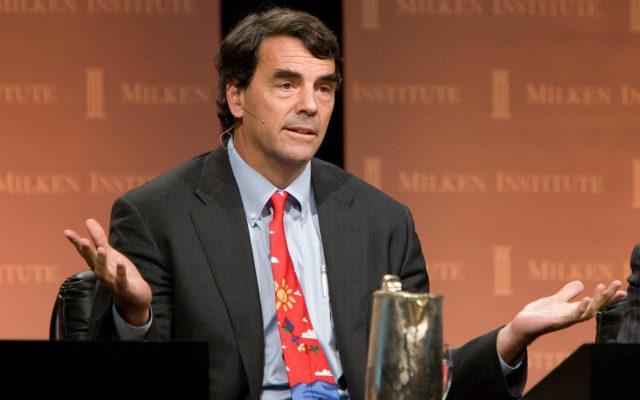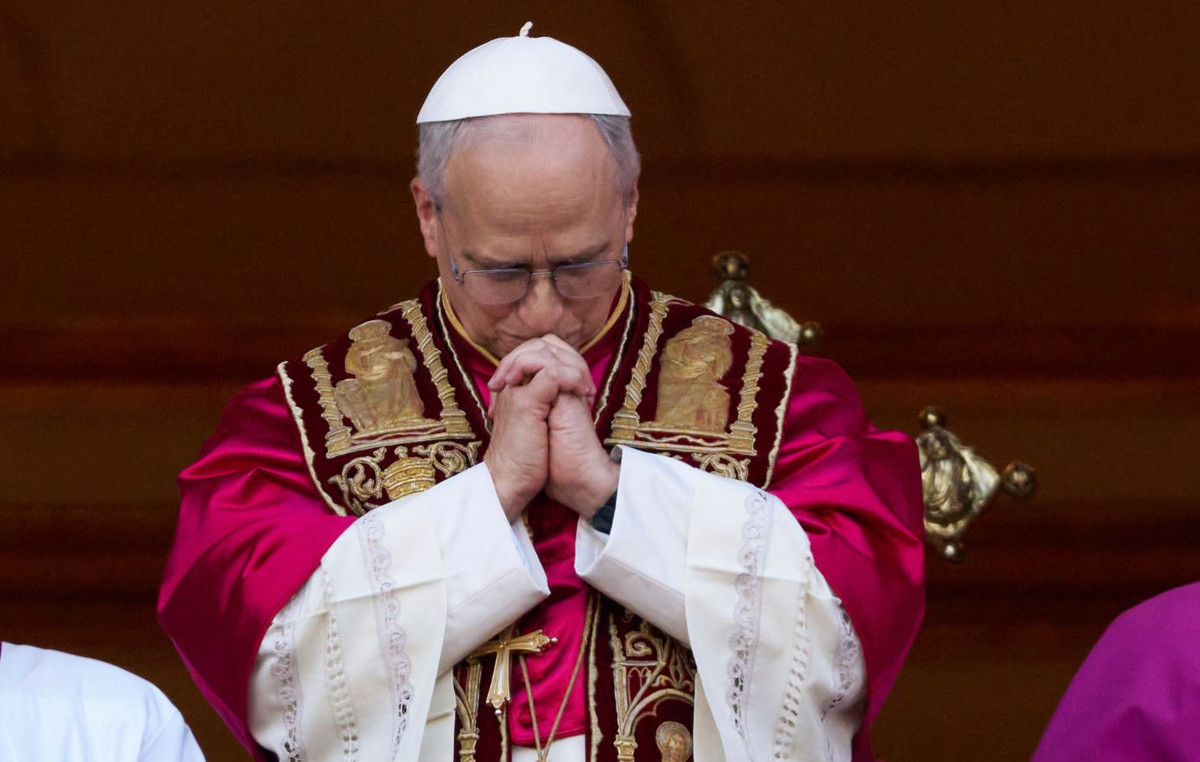- The Dow Jones Index is trading lower for the fourth consecutive session this week, with Wall Street mixed.
- The US PPI data has provided some relief to investors, although market sentiment remains fragile.
- The Dow Jones index forms a bearish head and shoulders pattern that could anticipate a deeper correction.
The Dow Jones Industrial Average (DJIA) posts losses for the fourth consecutive day this week, with Wall Street markets mixed, as US PPI data has eased concerns triggered by Wednesday's Consumer Price Index (CPI).
The US Producer Price Index (PPI) rose 0.2% monthly in March, down from the 0.6% increase recorded the previous month. The annual rate accelerated to 2.1% from 1.6% in February, but remained below the 2.2% expected by market experts.
Wall Street indices are trading mixed on Thursday: the Nasdaq rises 0.6%, to 16,279 points, the S&P 500 trades 0.1% above the opening level, at 5,166 points, while the Dow Jones falls 0.3% , up to 38,343 points.
Dow Jones News
Most sectors of Wall Street posted losses on Thursday, with investor confidence still weak as the market scales back its hopes for Fed cuts this year.
The energy sector is the most affected on Thursday, with a decrease of 1%, followed by the financial sector, which fell 0.59%. On the winning side, Technology leads the gains with an advance of 0.98%, followed by Communication Services, which rises 0.45%.
Travelers Companies (TRV) is the worst stock in the index, down 1.68% to $220.61. Chevron (CVX) follows, down 1.34% to $160.50. Nike (NKE) outperforms its peers on Thursday, boosted by the release of the US Olympic uniforms, with a 3.15% rally to $91.78, followed by Apple (AAPL), which is trading 1.41% higher at $170.16.
Dow Jones Technical Outlook
The Dow Jones index is trading lower again on Thursday. The move below 38,560 has triggered a bearish head and shoulders pattern that could foreshadow a steeper decline.
The next bearish targets are 38,033 and 37,750. The measured target of the head-shoulder pattern is the mid-January low and the 38.6% Fibonacci at 37.087. A bullish reaction above 38,540 could find some more supply before 39,000 (order block).
Dow Jones Index Daily Chart

Frequently asked questions about central banks
What does a central bank do?
Central banks have a key mandate to ensure price stability in a country or region. Economies constantly face inflation or deflation when the prices of certain goods and services fluctuate. A constant rise in the prices of the same goods means inflation, a constant fall in the prices of the same goods means deflation. It is the central bank's job to keep demand in line by adjusting its interest rate. For the largest central banks, such as the US Federal Reserve (Fed), the European Central Bank (ECB) or the Bank of England (BoE), the mandate is to keep inflation close to 2%.
What does a central bank do when inflation is below or above the expected target?
A central bank has an important tool to raise or lower inflation: modify its reference interest rate. At pre-communicated times, the central bank will issue a statement with its reference interest rate and give additional reasons why it maintains or modifies it (cuts or raises it). Local banks will adjust their savings and loan rates accordingly, which in turn will make it harder or easier for citizens to make a profit on their savings or for companies to borrow and invest in their businesses. When the central bank substantially raises interest rates, we speak of monetary tightening. When you reduce your reference rate, it is called monetary easing.
Who decides monetary policy and interest rates?
A central bank is usually politically independent. Members of the central bank's policy council go through a series of panels and hearings before being appointed to a position on the policy council. Each member of that council usually has a certain conviction about how the central bank should control inflation and the subsequent monetary policy. Members who want a very loose monetary policy, with low rates and cheap loans, to substantially boost the economy, while settling for inflation slightly above 2%, are called “doves.” Members who prefer higher rates to reward savings and want to control inflation at all times are called “hawks” and will not rest until inflation is at 2% or just below.
Is there a president or head of a central bank?
Typically, there is a chairperson who leads each meeting, has to create a consensus among the hawks or doves, and has the final say when votes need to be divided to avoid a 50-50 tie on whether to adjust current policy. The president will give speeches, which can often be followed live, in which he will communicate the current monetary stance and outlook. A central bank will try to push its monetary policy forward without causing wild swings in rates, stocks, or its currency. All central bank members will channel their stance toward markets ahead of a monetary policy meeting. A few days before a monetary policy meeting is held and until the new policy has been communicated, members are prohibited from speaking publicly. This is what is called the silent period.
Source: Fx Street
I am Joshua Winder, a senior-level journalist and editor at World Stock Market. I specialize in covering news related to the stock market and economic trends. With more than 8 years of experience in this field, I have become an expert in financial reporting.







